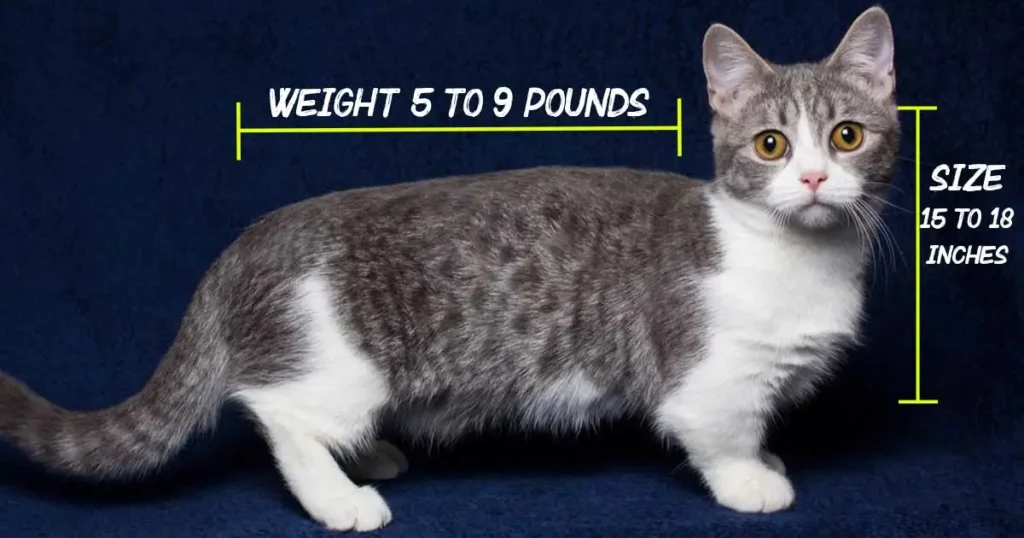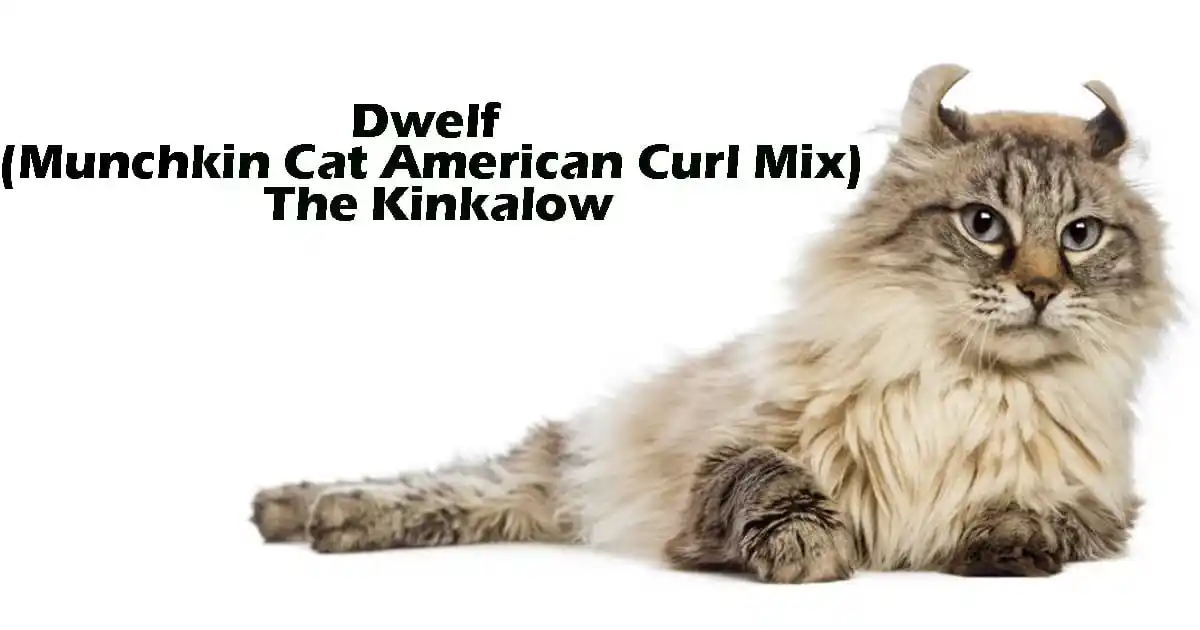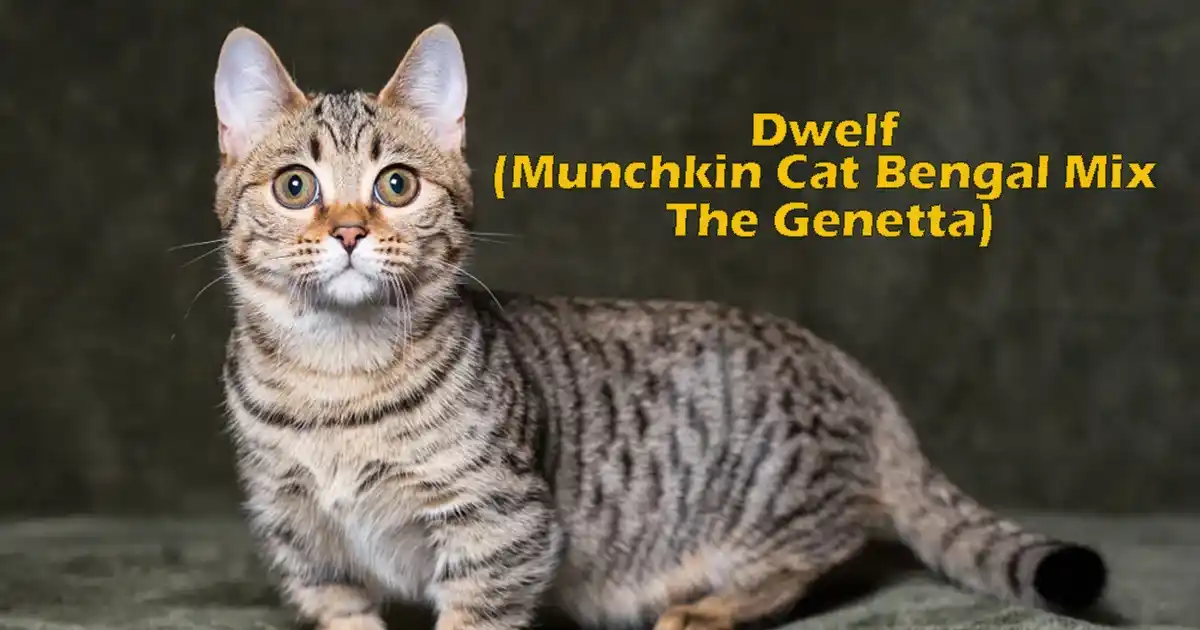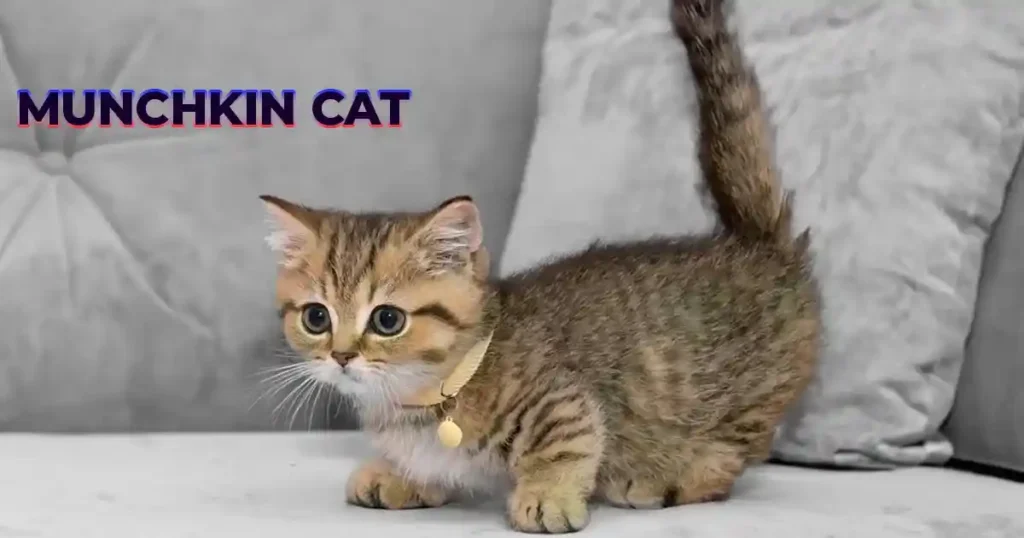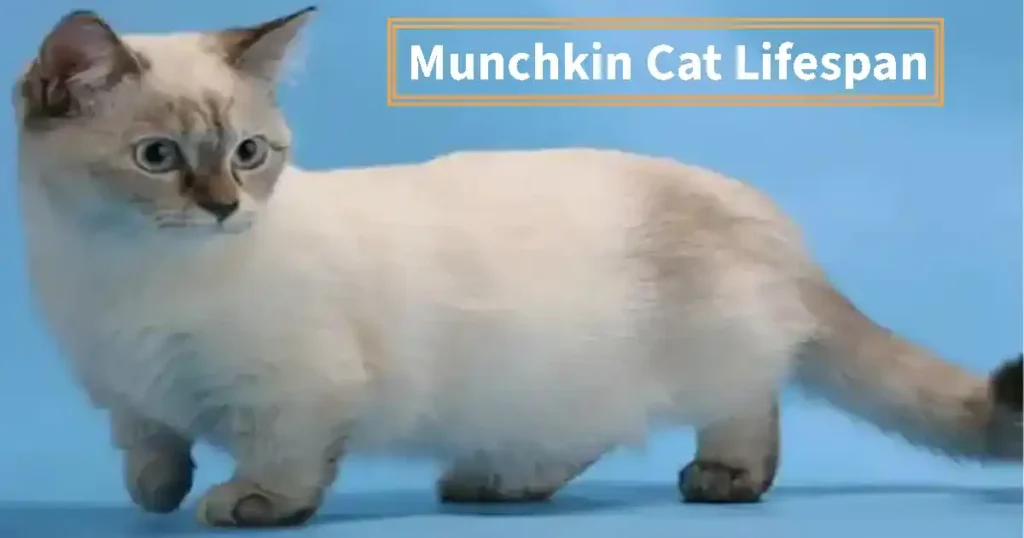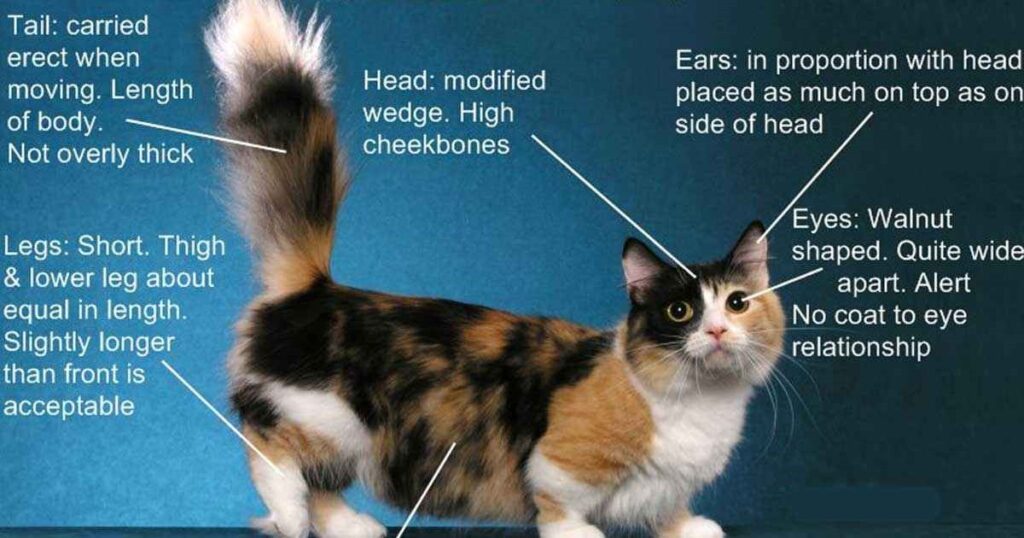Munchkin cats are distinct for their small stature, primarily due to their short legs, yet they have a typically sized, elongated body. On average, adult Munchkins weigh between 5-9 pounds (2.3-4 kg), with males usually weighing slightly more than females, reaching around 6-9 pounds, while females average 5-8 pounds.
Their height is relatively short, standing at about 6-9 inches (15-23 cm) tall at the shoulder, and their body length can create a dachshund-like appearance. Munchkins generally reach full size by one year, although some may continue to fill out slightly until two years of age.
Factors like non-Munchkin parentage influence their size and shape, as Munchkins are typically crossed with other cat breeds to avoid genetic complications. Their growth chart shows typical milestones, with kittens reaching around 4-6 pounds by three months and gradually growing to adult weight by one year.
- Weight: Typically, an adult Munchkin cat weighs between 5 to 9 pounds. Males are often slightly larger than females.
- Height: Despite their short legs, Munchkin cats usually stand 6 to 9 inches tall at the shoulder.
- Length: Their body length ranges from 12 to 15 inches, similar to many other cat breeds.
Munchkin Cat Size: What You Need to Know
Munchkin cats, famous for their adorable short legs and playful demeanor, are a beloved breed for many cat enthusiasts. However, prospective owners often ask, “How big do Munchkin cats get?” This article will provide a comprehensive guide to the size, growth, and physical characteristics of Munchkin cats.
| Attribute | Details |
|---|---|
| Height | Typically, Munchkin cats stand between 5 to 7 inches (12.7 to 17.8 cm) tall at the shoulder. |
| Length | They measure around 14 to 18 inches (35.6 to 45.7 cm) in body length, excluding the tail. |
| Weight (Male) | Males usually weigh between 6 to 9 pounds (2.7 to 4.1 kg). |
| Weight (Female) | Females typically weigh between 4 to 8 pounds (1.8 to 3.6 kg). |
| Tail Length | Proportional to their body, with a length similar to other cat breeds. |
Size and Weight by Age
Weight of Cat by Age: Kittens start their lives weighing just a few ounces. Their growth is rapid during the first year, and they typically reach their full adult weight by the time they are one year old. Monitoring a kitten’s weight during this period is crucial to ensure they are developing healthily.
| Size | Weight |
|---|---|
| 15-18 inches | 5-9 pounds |
Adult cats, depending on the breed and individual factors, usually fall within a weight range of 8 to 15 pounds, with some larger breeds reaching up to 20 pounds. Maintaining a healthy weight is essential for a cat’s overall well-being, and regular monitoring through a weight chart can help identify any potential health issues early on.
Caring for a Munchkin Cat
Caring for a Munchkin cat involves providing a balanced diet to maintain a healthy weight and prevent them from becoming overweight or obese. Owners should be aware of the dietary needs and avoid overfeeding to prevent a fat Munchkin cat. Regular vet check-ups are also crucial for monitoring their health and addressing any potential issues early.
Factors Affecting Munchkin Cat Size
1. Genetics
Genetics play a crucial role in determining the size of a Munchkin cat. Breeding with larger or smaller cats may result in slight variations in size.
2. Gender
- Males: Generally weigh more and have larger frames compared to females.
- Females: Tend to be slightly smaller, with a more delicate build.
3. Diet and Nutrition
A well-balanced diet promotes healthy growth and maintains an ideal weight. Overfeeding or underfeeding can impact their size and overall health.
4. Health and Exercise
Munchkin cats are active and playful. Regular exercise supports proper muscle development, while underlying health issues may affect their growth.
Munchkin Cat Personality
Munchkin cats are known for their playful, sociable, and affectionate nature. They typically enjoy being around people and other pets, making them excellent companions in a family environment. These energetic little cats love playtime and often engage in amusing antics, like standing upright on their hind legs to survey their surroundings, which enhances their rabbit-like appearance
- Care: Balanced diet, regular exercise, routine vet check-ups.
- Personality: Playful, affectionate, curious, social.
- Health and Lifespan: Generally 12-15 years, prone to specific health issues.
Munchkin Kitten Growth Chart
Munchkin kittens grow rapidly in their first few months. Here’s a rough estimate of their developmental milestones:
| Age | Weight (lbs) | Key Features |
|---|---|---|
| 0-4 Weeks | 0.2 – 0.5 | Nursing, eyes and ears open |
| 2 Months | 1.5 – 2.5 | Weaning, playful behavior |
| 4 Months | 3 – 5 | Increased agility and growth |
| 6 Months | 4 – 7 | Near adult size |
| 12 Months | 5 – 9 | Full-grown |
Consumer Perspective on Size
As shoppers, our inclinations with respect to measure and weight assume a critical part in driving business sector patterns. Figure out some kind of harmony among usefulness and transportability. To meet these demands, manufacturers constantly develop new products that are lighter, smaller, and more effective.
| Aspect | Details |
|---|---|
| Compactness and Accommodation | Shoppers prioritize convenience for items used frequently or on-the-go, such as cell phones, laptops, and wearable devices. Lighter and more compact gadgets are preferred. |
| Style and Design | Size and weight impact perceptions of quality, sophistication, and innovation. Sleek, slim designs are often associated with premium craftsmanship, while bulky or cumbersome designs may be seen as outdated or less attractive. |
Environmental Considerations
Size and weight likewise have natural ramifications, especially concerning carbon impression and maintainability. Bigger and heavier items ordinarily require more assets to deliver and move, adding to natural corruption. To control these effects, sensible practices like reusing and using eco-friendly materials are constantly adopted.
How to Ensure Healthy Growth for Your Munchkin Cat
- Provide a Balanced Diet: Opt for high-quality cat food rich in protein and essential nutrients.
- Regular Veterinary Checkups: Monitor their growth and address potential health issues early.
- Encourage Play and Activity: Stimulate their natural curiosity with interactive toys and games.
- Watch for Obesity: Their short legs can make excess weight particularly problematic, leading to joint issues.
Size & Weight in Popular Culture
Stereotypes and myths about weight and size are frequently perpetuated in popular culture. Established press frequently advances ridiculous excellence principles, prompting self-perception issues and undesirable ways of behaving. Testing these portrayals and advancing body inspiration is fundamental for cultivating a more comprehensive and tolerating society.
| Category | Details |
|---|---|
| Origin | Discovered in the USA in the 1980s |
| Recognition | Recognized by The International Cat Association (TICA) in 1994 |
| Lifespan | 12-15 years |
| Personality | Playful, affectionate, social |
| Appearance | Short legs, variety of colors and patterns |
| Care | Regular grooming, balanced diet, exercise, routine veterinary check-ups |
Superheroes and Bad guys: In comic books, motion pictures, and network shows, the size and weight of characters frequently assume a huge part in characterizing their powers, capacities, and personalities.
Health Implications of Size & Weight
Weight is a significant general medical problem all around the world in view of the significant impacts it has on one’s wellbeing from being too huge and excessively weighty. Horrendous eating routine and nonappearance of movement add to weight gain, extending the bet of various continuous diseases like diabetes and coronary ailment. Resolving these issues requires a multi-layered approach, including schooling, strategy changes, and admittance to sound choices.
Psychological well-being: Size and weight can impact psychological well-being and personal prosperity. Corpulence is related with an expanded gamble of sadness, nervousness, low confidence, and self-perception issues. Disgrace and separation connected with weight can additionally fuel mental trouble and add to social seclusion and low quality of life.
Systems for Overseeing Size and Weight
Embracing sound propensities like customary activity and eating an even eating regimen are fundamental for compelling weight and size the executives. Besides, centering on psychological wellness and taking care of oneself is dire for keeping a positive self-discernment and in everyday flourishing.
Average Weight of Munchkin Cats: For Munchkin cats, the average weight of males ranges from 6 to 9 pounds, while females average between 4 and 8 pounds. This weight range is consistent with the breed’s overall smaller size compared to other cats.
Changed Diet: Revolve around gobbling up a good eating schedule that consolidates different enhancement rich food assortments like natural items, vegetables, whole grains, lean proteins, and strong fats.
Growth and Development
| Growth Stage | Details |
|---|---|
| Kitten (0-6 months) | Rapid growth during the first few months, with short legs becoming more noticeable as they mature. |
| Adolescent (6-12 months) | Continued development in size and weight, reaching near-adult size by 12 months. |
| Adult (1-2 years) | Full size and weight are typically reached by 1 to 2 years of age. |
| Senior (7+ years) | Weight may stabilize or slightly decrease, with potential for reduced muscle mass. |
Conclusion
Munchkin cats present a unique blend of charm, playfulness, and companionship, characterized by their adorable size and lively personalities. They usually weigh between 4 to 9 pounds and stand around 5 to 9 inches tall, making them easy to handle and a delightful addition to any loving home. Their enchanting nature provides both amusement and affection, ensuring they are cherished members of the families they join.
FAQs
1. Are Munchkin cats always small?
Yes, Munchkin cats are naturally small to medium-sized due to their genetic traits, but their torso length is similar to other cats.
2. Do short legs affect their mobility?
Not usually. Despite their stature, Munchkin cats are agile and enjoy running, climbing, and playing.
3. Do Munchkin cats grow after one year?
Most Munchkin cats reach their full size by 12 months, though some may fill out slightly after this period.
4. How does a Munchkin cat’s size compare to other breeds?
Munchkins are smaller than larger breeds like Maine Coons but comparable in size to breeds like Siamese cats.
